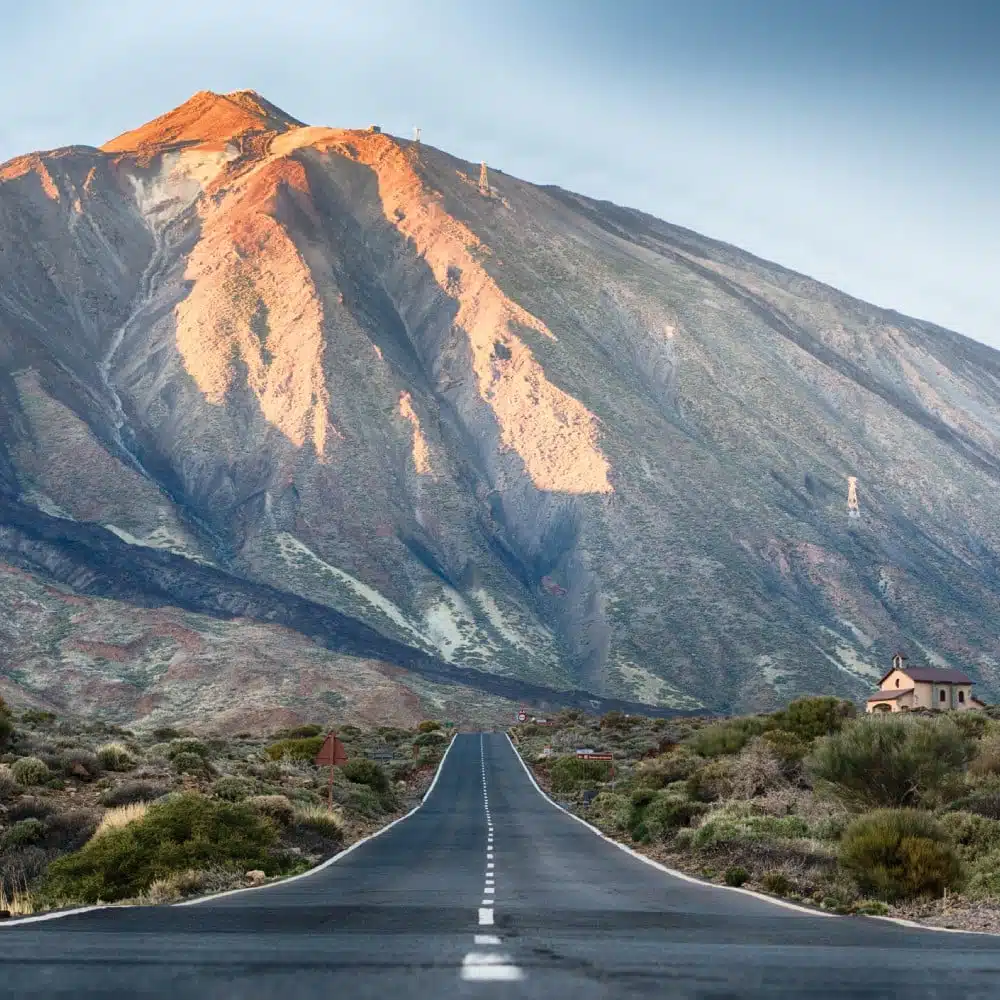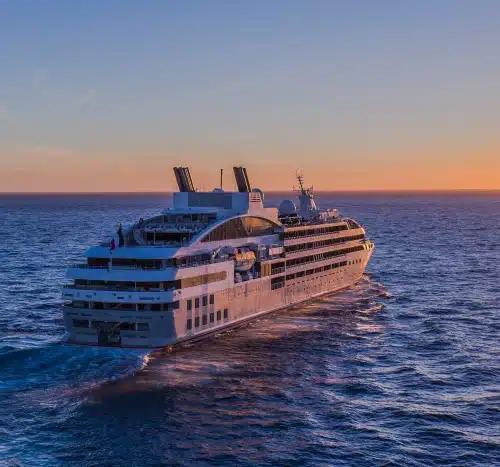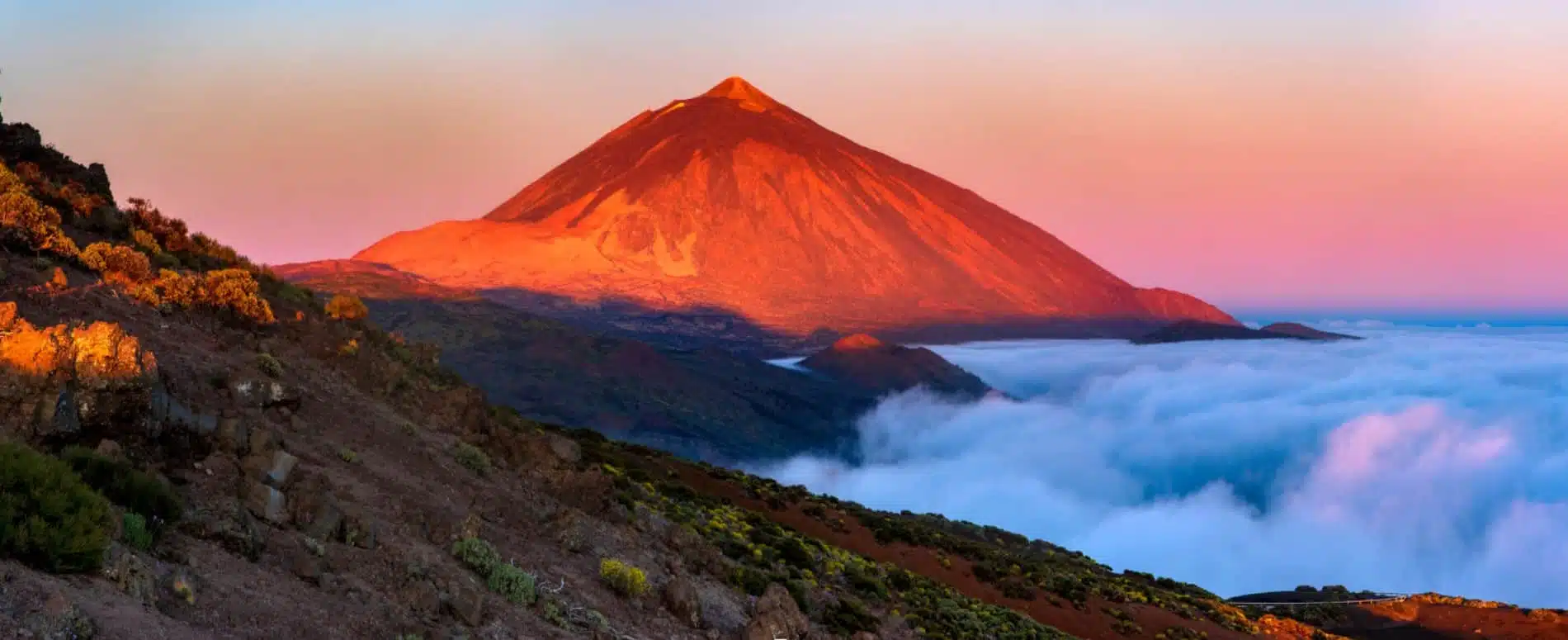Everything you need to know before you go…
Since the dawn of time, the Canary Islands have featured multiple geological treasures. Whether you visit Tenerife, La Palma or Lanzarote, the volcanic archipelago has lots to offer, such as calderas, lava flows and gigantic chasms. Here’s what you need to know before you wander onto this volcanic land.
View the magmatic landscapes of Cumbre Vieja on the island of La Palma

News of the eruption of the Cumbre Vieja volcano on the island of La Palma in September 2021 made its way around the world. The Canary Islands’ nine years of volcanic inactivity ended with a plume of smoke followed by a spectacular lava flow, which caught everyone’s attention (geology enthusiasts in particular).
Accessible on foot, the astonishing panorama left behind after the event is simply begging to be visited. The black earth of cooled lava is balanced out here and there by a few islands whose vegetation has been preserved: scenery worthy of a science fiction film. The surface area of La Palma has even increased, the lava flow having cooled to create solidified magma. All these indescribable sights can be viewed from the Cumbre Vieja National Park, which is well worth a visit by bike (be warned, it’s steep!) or hiking.
The other islands
The Canary Islands are full of volcanic sites to be admired by land or sea.
- In Fuerteventura: the Malpais de la Arena, with its reddish soil, draws a superb mountainous silhouette on the horizon.
- In Gran Canaria: the Caldera du Bandama, a former volcano, is two hundred metres deep.
- In El Hierro: the peak of Malpaso, a summit opening onto a ridge dotted with Canary Island pine trees.
- In Tenerife: the Alto de Garajonay, an extinct, easy-to-reach volcano and the summit of the island of La Gomera, offers a unique view of Mount Teide.
Tackling the slopes of Mount Teide on the island of Tenerife

At an altitude of 3,718 metres, Mount Teide reigns above Europe’s biggest volcanoes by some 2,000 metres. The peak of the archipelago is also a multifaceted place: depending on the slope and the season, it offers varied colours and landscapes, particularly between April and June when local plants (brooms, yellow descurainia bourgaeana bushes, and the famous Tenerife bugloss) come into bloom.
Various hiking trails lead to the summit. Visitors on a tighter schedule can take the local cable car to get close to it. Going all the way to the top requires being a very good walker.
The Mirador Pico Viejo trail leads to the so-called Montaña Chahorra crater, a gulf almost 800 metres across, the landscape of which resembles a lunar surface. This path also offers an exceptional view of Mount Teide, as well as the Canary Island coastlines. Another important walking route, the Mirador de La Fortaleza Trail, is ideal for contemplating the rich colours of Tenerife’s landscape. The cone of Mount Teide contrasts with the blue ocean and the red rocks of La Fortaleza, not forgetting the green canopy of the Orotava pine forest emerging through the landscape. There are multiple ways to tackle this volcanic site, one of the most beautiful in the world, making it one of the most accessible!
Some tips for your next trip to the Canary Islands
Equipment: Depending on the altitude, you will need good walking shoes, a backpack to carry water and a few energy bars, a hat and sun cream.
Cycling: cycling routes run throughout the Canary Islands. It is a sporty and ecological way to explore the slopes of volcanoes: although they are very steep in places, the routes do not exceed one hundred kilometres and there are many stopping places.
Climate: also known as “the islands of eternal spring”, the Canaries enjoy a mild climate all year round, making them an all-season destination par excellence.
Walking on the strange lunar surface of the Montañas del Fuego on the island of Lanzarote

Lanzarote’s exceptional rocky, lunar landscape is a particularly distinctive feature. It has seen some intense seismic and volcanic activity in the past, leaving remarkable traces in the Timanfaya National Park. The “Montañas del Fuego” make up the incredible panorama. The barren earth, wind-spread lichens, volcanic cones, and rocky outcrops of ochre and carmine sienna make this iconic land the object of a certain fascination.
The site is composed of strange landscapes: one of the spectacular views is at the foot of the vineyards of La Geria, whose grapes are planted in black soil. There, a Dantesque vision, with the Montañas del Fuego as the backdrop, is offered up to lovers of unusual landscapes, who can also visit the different places created by the artist César Manrique, who is responsible for several remarkable attractions on the island. Two of his emblematic creations are the El Diablo restaurant, with its grill installed over the opening of an active volcano, and the Mirador del Rio, which offers a unique view of the Chinijo archipelago. Just two must-see sites on an island with many iconic landscapes.
Glossary
Eruption: violent evacuation of various elements present in a volcano. In general, an eruption sends gas, lava and rock up into the atmosphere, causing ash rain.
Lava flow: by moving down over the slopes of volcanoes, lava causes flows, which, once cooled, remain visible on the landscape.
Caldera: a large crater formed by the eruption of a large quantity of lava.
Magma: molten and semi-molten rock beneath the Earth’s surface that causes volcanic eruptions as it rises.
Photos credits : ©Studio PONANT Mike Mareen / © iStock

PONANT takes you there
Sail to the shores of the most beautiful archipelagos



